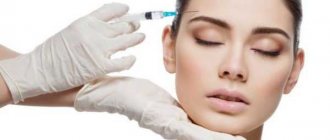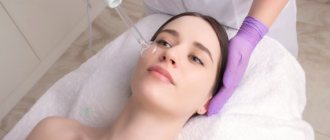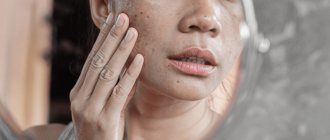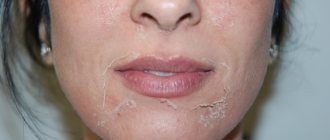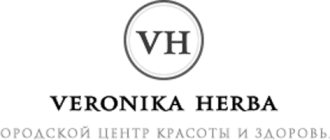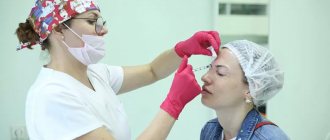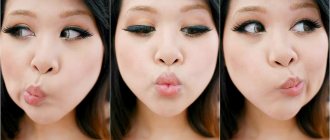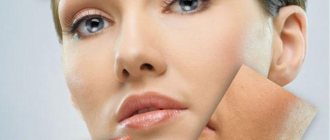Peeling is one of the most popular and useful skincare procedures, but after it the skin becomes sensitive and prone to irritation. You need to take care of your face carefully, using gentle methods, including restorative and moisturizing masks. The mask after peeling stimulates the regeneration of the skin, prevents the appearance of scars and the development of complications.
What can or cannot be done after the procedure?
Peeling always leads to remarkable visible changes, but if you neglect the rules that every cosmetologist must tell you before the procedure, not only may there be no effect, but the skin condition may even worsen.
Give up sports and do not do physical activity
After exposure to chemicals, lasers or special devices, the skin becomes extremely vulnerable. It will not react in the best way to all external influences, so sports activities during which increased sweating occurs are contraindicated until the skin has healed.
To improve your mood, order delivery to flowers in Almaty
The healing time depends on the type of peeling (superficial, medium or deep) and the individual characteristics of the person, but cannot be less than 10 days.
Sweat irritates the epidermis, causes discomfort (even burning and stinging) and can cause infection to penetrate into the deeper layers of the dermis. In addition, the dilation of blood vessels, which occurs during active training, contributes to redness of the face, but it is already red after peeling.
Avoid baths and saunas
You can’t go to baths and saunas for the same reasons:
- high temperatures;
- increased sweating;
- infections.
We recommend: Why is your face red, flaky or swollen after peeling and what can you do to eliminate the problems?
Public places are full of sources of various diseases: viral, fungal, bacterial, so you should definitely forget about them for at least a month.
Other troubles can happen in steam rooms:
- scarring of tissues and the appearance of age spots as a result of oxidation of the skin under the influence of hot steam;
- increased fragility of blood vessels, formation of bruises, swelling, hematomas;
- skin intoxication with residues of chemicals used during peeling.
You can't eat spices or drink alcohol
Alcoholic drinks help dilate blood vessels in the face and speed up circulation. This often leads to the formation of swelling, inflammation and increased redness of the face. Also, the acid that remains after peeling can become a source of:
- allergies;
- severe irritation;
- burns.
Important ! Drinking alcohol after procedures using hyaluronic acid leads to zero effect.
As for spices, they contain capsaicin, a substance that causes inflammation. During skin healing after peeling, it is not recommended to consume hot and spicy foods, as well as seasonings and spices.
It is necessary to prevent infections
Human skin is covered with a thin protective layer, which acts as a barrier against various contaminants (dust particles) and infections. After peeling, this barrier is absent, so it must be created artificially.
The rules for skin care after peeling should be announced by a cosmetologist . In each specific case, he assesses the condition of the epidermis, the depth of the intervention, and takes into account the reaction to manipulation even during the procedure. Accordingly, after the procedure, he tells you what means can be used to prevent infections. For this use:
- various serums and masks with antioxidant effect;
- antibacterial ointments;
- folk remedies (for example, vinegar water);
- in some cases, a course of antibiotics is even prescribed (after deep peelings).
You cannot choose a means to prevent infections on your own; this can only be done by a specialist.
Reduce stress
Stress and hormones go hand in hand. During a nervous experience, corticosteroids are released, which, in turn, adjust the production (reduce or increase) the amount of other hormones. In addition, corticosteroids:
- activate some enzymes that negatively affect the skin;
- impair blood circulation in the facial skin;
- suppress local immunity;
- activate sebum production.
We recommend: Effective restoration of facial skin after peeling. Review of the best products
Stress hormones increase skin sensitivity , so it becomes more susceptible to external environmental factors.
Important ! Cosmetologists say that if a person is under stress, the effect of cosmetic procedures will be less noticeable and lasting.
Face mask recipes
Whether it is possible to use masks and other care products after peeling is determined by the cosmetologist who performed the procedure. After one type of exposure, nutritional compositions can be applied to the face within a couple of days, after another - after a few weeks. It is unacceptable to use masks without the consent of a specialist; this may result in complications.
At home, you can make a mask yourself from the products available in the refrigerator, or you can buy a post-procedure care product in the store.
Of the store-bought formulations, the following are considered the highest quality:
- Deeply Moisturizing cream mask from the manufacturer New Line based on hyaluronic acid, panthenol, amino acids, white clay, oatmeal and dandelion extracts;
- anti-inflammatory, antiseptic, analgesic and restorative mask Lipacid from GIGI with lavender oil, white clay, zinc oxide, chamomile extract and amino acids;
- exfoliating, moisturizing and regenerating product Rose de Mer Peel & Renew from Christina based on shea and peanut oils, natural wax, allantoin, isopropyl and palmitic alcohol.
There are many recipes for homemade post-procedure masks. The most popular and effective ones are listed below:
- After peeling with calcium chloride, a mask is used to help make the skin moisturized. Take the yolk, half a teaspoon of dark honey, a teaspoon of powdered oatmeal, 10 drops of olive oil and the same amount of squeezed lemon juice. Combine honey and oil and heat in a steam bath. Add the yolk. Shake and add lemon juice. Pour oatmeal into the resulting foamy mass and stir thoroughly.
- To prepare a soothing composition, take a teaspoon of grape seed oil and pour 10 drops of chamomile oil into it. Spread a thin layer on the face.
- After glycolic peeling, it is necessary to moisturize the skin, for which you take fat sour cream and liquid honey in equal proportions.
- Another moisturizing recipe that helps with redness and irritation. Mix natural yogurt and sea buckthorn oil in equal proportions, squeeze out 5 drops of aloe juice.
- A simple soothing composition helps to cope with redness and burning of the face. Take 2 tablespoons of oatmeal and grind it to a powder. Pour in warm water to form a mass of creamy consistency. Before applying to the face, leave the oatmeal for 15 minutes to swell.
- A restorative and moisturizing mask can be made from 10 g of dry yeast, a teaspoon of linden decoction, and 50 ml of heated kefir. First, combine the yeast and kefir, and after 10 minutes, pour in the decoction. The mixture is thoroughly stirred.
- Take a small potato, finely grate it, and squeeze out the liquid. Add a teaspoon of kefir to the pulp, stir, and apply to the face.
- Mix 2 tablespoons of coconut oil with a tablespoon of powdered oatmeal. Pour in 50 ml of chamomile infusion (a tablespoon of flowers per glass of water), stir.
- Mash the pulp of half a small banana and add a teaspoon of sour cream. This face mask after peeling is used for dry skin.
- To prevent yellowing of the skin after retinoic peeling, a whitening composition is used. Take a tablespoon of powdered rice and 2 tablespoons of low-fat sour cream and mix.
What and how to wash after chemical and other procedures?
Next, find out why you should not wash your face immediately after the procedure, when and how to do it correctly, and also what is the best way to carry out water procedures. Since careful and gentle skin care is necessary after peeling, special requirements are put forward for washing. Depending on the type of peeling, washing can be done at different intervals.
After superficial peeling, you can wash your face after 12 hours, after medium peeling - after 1-2 days.
Cosmetologists usually recommend washing your face when your skin feels tight and a noticeable film or crust forms on your face. Suitable for washing after cosmetic procedures :
- boiled water at room temperature;
- cream;
- soft milk for sensitive skin;
- acidified water (1 tablespoon vinegar, or the juice of half a lemon, per 1 glass of boiled water).
Acidified water:
- accelerates the process of exfoliation of dry scales;
- dries out the skin;
- disinfects the surface.
A good alternative to water with vinegar or lemon juice is a tonic with a reduced content of fruit acids.
Who can do peeling and when?
Any type of peeling procedure is recommended to be carried out when solar activity is low. The best time is from October to March. This condition exists due to the threat of pigment spots on renewing skin.
Read also: Oil for wrinkles around the eyes
As for age, starting from adulthood, you can already undergo non-aggressive types of peeling. At this age, the most common problem is acne and blackheads. At an earlier age, the procedure is carried out only in agreement with the parents.
Non-traumatic superficial peeling requires 5-6 sessions with 10-day breaks. After this, to maintain the effect, you can visit a cosmetologist once a month, and repeat the course after six months. You will be advised to do medium and deep peeling at least three times, but with a large interval - 2-3 weeks. You can repeat it after a year.
After how many days can I apply makeup?
Girls are warned in advance, even before the procedure, that after it they will have to forget about decorative cosmetics for a while . Usually, a cosmetologist gives instructions on the period of refusal of makeup on an individual basis, because a lot depends on the type of peeling, skin sensitivity, and personal characteristics.
On average, until the skin has completely healed (12-14 days), cosmetologists do not recommend using cosmetics. But skincare cosmetics have their place. Even the cosmetologist himself, after the procedure, can make a list of products that can be used. These will definitely be soft nourishing and moisturizing products that can be used a day after peeling, and always with sun protection (SPF).
We recommend: How to behave after peeling to prevent side effects. Is it possible to go to the bathhouse?
Is it permissible to use foundation, on what day can it be applied?
Foundation or fluid is the basis of any makeup. You should forget about it for 2 weeks after peeling, or even more, and after this period, take care of purchasing a high-quality foundation with sun protection (SPF).
Important ! Before you start using foundation after peeling, you need to consult a cosmetologist.
A cheap foundation can ruin your skin - it clogs your pores. Therefore, low-quality cosmetics are definitely not suitable. It is better if the cosmetologist recommends a manufacturer or line of products that can be used after peeling.
Care advice from cosmetologists
Cosmetologists encourage doing peelings, but always in trusted salons from specialists with medical education. A professional will be able to assess the condition of the skin, identify the problem and choose the most appropriate procedure. During preparation for peeling, and after it, a cosmetologist can give a number of tips :
- You should not do peeling (especially deep peeling) on the eve of a vacation, during which you plan to fly to hot countries, or in the summer.
- It is not recommended to subject the skin to any tests within 12-24 hours after peeling. It's even better to drink through a straw.
- The scales and crusts that cover the face some time after peeling should not be tried to be peeled off. When they go away on their own, the skin looks attractive, but when removed on their own, red marks remain.
- Facial redness after peeling is normal. If it does not go away for too long or gets worse, you need to contact your cosmetologist.
Since peeling is a procedure for deep cleansing the skin, it is better not to take risks and not to use folk remedies and cosmetics without consulting a doctor. Only a cosmetologist can give practical recommendations and advice that will help prolong and enhance the effect of peeling, speed up the tissue healing process and achieve smooth, clean and beautiful facial skin.
Means to combat complications
If care is not taken properly after peeling, consequences that are unusual for cleansing may occur on the skin. You need to fight them at the first manifestations. The degree of unpleasant consequences and the duration of the recovery period depend on the speed of your reaction.
Let's consider the main complications after cleansing the skin:
- The appearance of acne is a problem often caused by inappropriate care after peeling. To eliminate the disease, it is recommended to consult a cosmetologist to prescribe a sebostatic, anti-inflammatory and antibacterial agent;
- An allergic reaction, itching, rashes - it is better to avoid allergies than to treat them later. After peeling, the skin becomes more sensitive to cosmetic products, so before using cream, foam, or gel, perform an allergy test. In response to allergies, antihistamine medications are prescribed to relieve symptoms;
- Hyperpigmentation – this also needs to be prevented. To do this, plan serious facial cleansing procedures for autumn and winter, protect your face from sun exposure as much as possible, and use special creams. Avoid cosmetics with extracts of lavender, lemon, bergamot, orange and cinnamon for a while. To eliminate already noticeable stains, the cosmetologist prescribes whitening creams;
- Hardening of the skin, the appearance of a crust - tearing it off is strictly prohibited. Be patient - it will go away on its own.
Remember, complications after peeling are a sign of improper, insufficient care. Do not hesitate, at the slightest suspicion of illness, contact a specialist to prescribe a remedy or drug.
